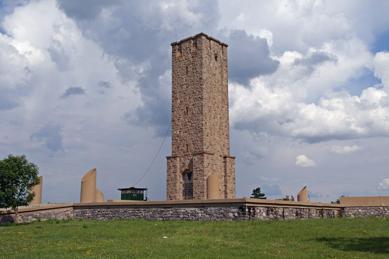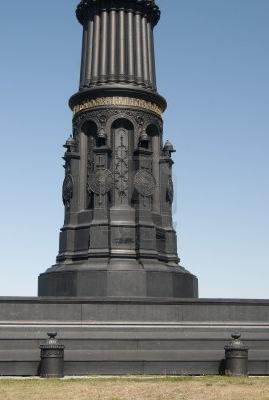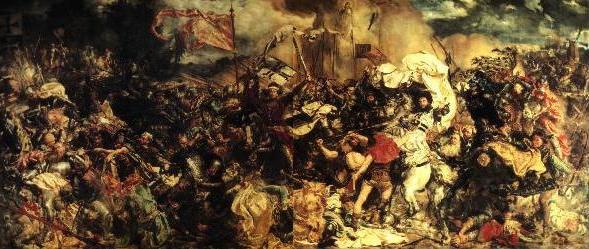Kosovo field. The Battle of Kosovo on June 15, 1389
The battle on the Kosovo field is a major battlebetween the combined forces of Serbia and the Bosnian kingdom with Sultan Murad I and his Turkish army. It happened on June 15, 1389. Kosovo field is located near modern Pristina. They are separated by 5 kilometers. The fight brought great losses to both parties.
What preceded

A serious disadvantage of the Serbian kingdom wasthat it broke up into several small formations that were constantly at odds with each other. Naturally, they were unable to repel enemy attacks. Serbian and Albanian princes, forming a coalition led by Prince Lazar Khrebeljanovic, in every way opposed the Ottoman troops.
Kosovo was the central part of the Serbian lands. It was a crossroads of important roads, which opened up a number of routes for the Turks to move further into Serbian lands. Here an important battle took place.
Murad I made his way here through the lands of his vassals in Macedonia.
The forces of the parties
The Ottoman army numbered about 27-40 thousand. person. These included the Janissaries (2-5 thousand people), the riders of the Sultan’s personal guard (2.5 thousand people), the sipahi (6 thousand people), the Azapı and Akıncı (20 thousand) and the warriors of vassal states ( 8 thousand).
Prince Lazar Khrebelyanovich led the army of 12-33 thousand soldiers.

12-15 thousand were directly subordinate to the prince. person. Vuk Brankovich led for a 5-10 thousand people. The same number of warriors was under the command of Bosnian grandee Vlatko Vukovich. The Serbs were assisted by knights from Hungary and Poland. In addition, the Hospitallers came to their rescue - the knights of the Order of St. John. As a result, in the Serbian army there were detachments from Bosnia (sent Tvrtko I), Wallachian, Bulgarian, Croatian and Albanian squads.
The weak point of the Serbian army was the lackcentral command. In addition, the army was not balanced in its composition. The infantry weakly covered the heavy cavalry in armor. The latter was the main part of the troops.
The Serbs did not have such military experience as the Turkish army, which for 30 years has won victories in battles.
Battle
Kosovo Field - a place that remembers the battle of June 151389 On this day, the army under the leadership of Prince Lazar Khrebelianovich opposed the army, which was much larger than in numbers. The songs of Serbia indicate that the battle lasted for three days.
From the Ottomans Murad I led the Turkish troops,Prince Bayazid took command of the right flank, and Prince Yakub took the command of the left. Ahead of the building on the flanks were 100 archers. Janissaries occupied central positions, behind which the Sultan was among the soldiers of the Guard.
Prince Lazar commanded the center, the right flank was led by Vuk Brankovich, and Vlatko Vukovich was the left. The entire front of the Serbian army was occupied by heavy cavalry, horse archers were on the flanks.
To present the course of events in Kosovo, the map can clearly show the location of the troops.

Unfortunately, in Serbian and Turkish sourcesbattle data are so contradictory that historians cannot reconstruct a battle. It is known that the Serbs were the first to rush into battle, despite the numerical superiority of the enemy. Cavalry wedge entered the Turkish position. At the same time, shelling of Serbian positions by Turkish archers began. The Serbs managed to break through the left flank of the Ottoman army. The latter suffered heavy losses. But in the center and on the right flank there was no such success. After some time, the Serbian army was able to push back the Turk in the center. The right flank of the Ottoman army under the command of Prince Bayazid quickly turned to the counterattack, pushed the Serbs back, causing a serious blow to the infantry. After some time, the defense of the Serbian infantry was broken, so she began to retreat.
Light Turkish cavalry soon struck a counterattack. The infantry went on armored Serbian riders. The first managed to overturn the cavalry.
Without commanders ...
Vuk Brankovich, saving his troops, left Kosovofield. His actions gave rise to various interpretations. Some believe that Vuk saved his warriors. Others are convinced that he was retreating, afraid of losing his army at all. But the people believe that the prince betrayed Lazarus, his father-in-law. Vlatko Vukovich stole the remnants of his troops and the troops of Lazarus.

Prince Lazarus was captured and executed the same day.
Serbian voivode Milos Obilic was able to penetratethe camp of the Turk, declaring himself a defector. He was able to kill the Ottoman sultan at the very beginning of the battle. Milos stabbed Murad with a knife, but the sultan’s guard did not let him go.
Bayazid I now led the Turkish army. As soon as he found out about the incident, the prince sent a messenger to his elder brother Yakub. The message said that Sultan Murad was giving new orders. Upon the arrival of Yakub to Bayazid, he was strangled. Now Prince Bayazid is the only heir of Murad.
No winners
The battle of Kosovo in 1389 only formallybrought victory to the Turks. But the battlefield did not get anyone. Although the Serbs lost an incredibly strong opponent, but at the same time they showed desperate courage. This led to great losses among the Turks. They could no longer continue the fighting, so they quickly returned to the East, not forgetting about the Kosovo field.

The battle led to the birth of many legends. Many of them are related to the fact that the commanders were killed before the end of the battle. Therefore, none of them did not know the outcome of the battle. The circumstances of their death were quickly overgrown with legends.
For example, there are a number of versions of howSultan Murad is killed. One of them claims that he died at the hands of a Serbian warrior who pretended to be dead. But in the Serbian chronicles you can find more information. The official version is that he was killed by Prince Milos Obilic. There is a legend that he headed the Order of St. George. This community set as its goal the assassination of the Sultan.
Consequences of the Battle of Kosovo
Serbia was able to maintain its independence, butlosses after the battle were very high. And it took a long time to assemble a new army. After some time, the Ottoman army returned and conquered Serbia - in 1459. And then she went on, almost reached Vienna. The accession of the Serbian lands to the Ottoman Empire stopped the political and economic development of the country. And the cultural development of the Serbs finally turned upside down.
Prince Bayazid, who has now become the Sultan,undoubtedly was a great commander. He is better known as Bayazid Lightning. At the same time, he pursued an internal policy quite differently from his father. The new sultan stopped forced assimilation in the conquered territories. Local authorities began to govern the provinces.
Losing like a win
The history of Kosovo has shown that the loss in the war andloss of troops can raise the national spirit and identity of the people. And even when the Turks owned the Serbian lands for 300 years, the Serbs were able to preserve their national identity. Moreover, they managed to preserve Orthodoxy, while their neighbors, Albanians almost en masse converted to Islam.
Some historians believe that if the Turkswon, then it would accelerate the conquest of the Balkans. And the death of Sultan Murad and the incredible resistance of the southern Slavs gave them the opportunity to preserve their nationalities and religion. Europe has not been subjected to what it could. Kosovo, Serbia entirely, took on a substantial part of the blow.

The importance of the battle for the Serbs
Despite the defeat of the Serbs, the battleThe year 1389 was very important. Its importance lies in the unification of the existing Serbian principalities. In fact, the Kosovo field is the place where the history of the united state of Serbia began. Many researchers argue that this battle is one of the most unknown and incomprehensible. The part asserts that this story was created by legends and conjectures confirmed by sources of the XIV century.

Serbian historians believe that initially there was a series of variations on the Kosovo battle. Over time, they merged into one.
Why has the story turned into a legend?
It is possible that the myth was created in order to influence the generations of Serbs. The basis of the legend is a biblical story. Prince Lazarus is often compared to Jesus Christ.
The religious motive also remains in the legend. The duration of the battle - 3 days, so you can draw a parallel with Calvary. And the death of almost the entire Serbian army is martyric.
Therefore, almost all folk songs and epicsthey glorify warriors as martyrs. And the highest value of Serbia was the crown of martyrdom, that is, the emphasis is on the spiritual meaning of events, therefore the Serbs feel themselves victorious. And this feeling gives inspiration to the life of the new generation.











